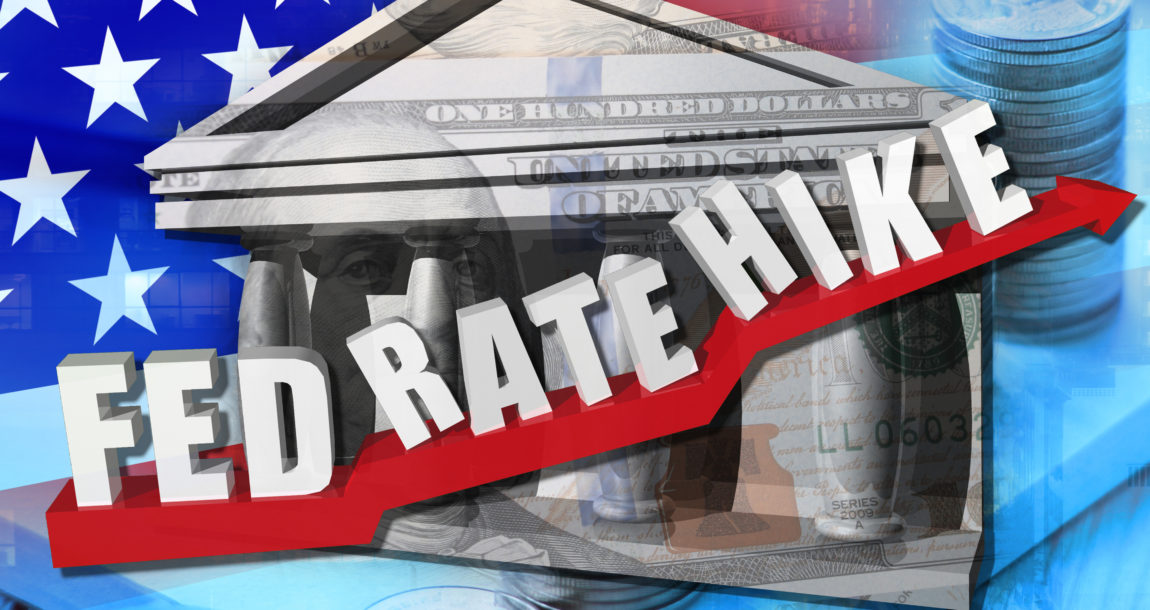Fed continues assault on inflation with another .75 point rate hike

As expected, the Federal Reserve on Wednesday continued its assault on inflation by jacking up interest rates another three quarters of a point and signaled yet again that it’s not done firing the weapons it has.
This marked the sixth time this year the central banking committee has raised rates, and the fourth time in a row for a 75 basis point jump, in spite of worries such action could plunge the county into recession.
“In determining the pace of future increases in the target range, the Committee will take into account the cumulative tightening of monetary policy, the lags with which monetary policy affects economic activity and inflation, and economic and financial developments,” bank officials said in a statement released at the end of the Fed’s two-day policy meeting.
In plainer talk, economists and analysts said, this action showed the Fed cannot control the rate of inflation, is running out of options and may delay a pivot to smaller interest rates in upcoming months.
'We have a ways to go'
"My takeaway from Chairman Powell’s press conference were just these five words: ‘We have a ways to go,’” said Jason Staley, chief investment officer of the Personal Financial Services group at Schneider Downs Wealth Management Advisors. “That, I think, surprised the markets which were looking for some signs that the Fed will now pivot. Instead, he did not take another 75 basis point increase off the table for December.”
Some even said the move officially signals a recession, at least in the housing market.
“The housing recession is here,” Marty Green, principal of Polunsky Beitel Green, who was appointed to the Finance Commission of Texas this year. “The big question now is how quickly it spreads to the rest of the economy.”
As for when a pivot or pause in the pace of rate increases will occur, Green said the question remains open.
“For the residential real estate sector, the answer is not soon enough,” he said.
The rapid interest rate hikes have reduced the ability of potential home buyers to enter the market and those locked in to super low rates aren’t willing to reduce sale prices enough to motivate buyers, Green said.
But others said there are signs that’s already happening and believe the Fed signaled as much.
Slowdown signaled
“Fed Chairman Jerome Powell has repeatedly stressed the Fed will keep at it; he has also noted it would soon be approaching the time to slowdown,” said Lawrence Gillum, fixed income strategist, LPL Financial, and chief global strategist at LPL Financial. “There are calls from within the Fed that it is now time for it to downshift rate increases as the economy responds to earlier rate hikes.”
Gillum and others are forecasting a .50% increase in rates in December amid economic indicators that things are returning to normal.
“As odd as it may seem, used car prices were one of the first signs that inflation was beginning to take hold,” Gillum and Jeffrey Roach, chief economist at LPL Financial said in a report. “Prices rose dramatically as a shortage in semiconductor chips and other necessary products for vehicle manufacturing were in short supply due to pandemic-led supply chain challenges. Used car prices have fallen steadily since, reaching near normal levels as the auto industry has ramped up production.”
The steady climb in mortgage rates to over 7% for the first time since 2001, the analysts said, has stopped the “parabolic rise in housing prices.”
“Prices are now coming down across the country for new and existing homes,” they wrote.
Others, too, predicted a pivot for the Fed that will stretch into early next year.
“The rate increases are seen to be slowing by December and similarly, the forecast according to the FedWatch tool is for an additional 25 basis point increase in March,” said Robert Johnson, chairman and CEO at Economic Index Associates. “All told, this would put the target Fed funds rate North of 5%, which is consistent with the Goldman Sachs outlook.”
The one caveat in the analysis, Johnson said, that if inflation continues to come in stronger or weaker than expected, the Fed might change course.
“This week's job openings number and the Institute for Supply Management manufacturing numbers ran hotter than expected, providing evidence counter to supporting a Fed pivot,” he said.
Doug Bailey is a journalist and freelance writer who lives outside of Boston. He can be reached at [email protected].
© Entire contents copyright 2022 by InsuranceNewsNet.com Inc. All rights reserved. No part of this article may be reprinted without the expressed written consent from InsuranceNewsNet.com.
Doug Bailey is a journalist and freelance writer who lives outside of Boston. He can be reached at [email protected].





Americans expect to need $1.25M for a comfortable retirement, study finds
Six in 16: My family’s military journey and reflections on security
Advisor News
- Social Security retroactive payments go out to more than 1M
- What you need to know to find success with women investors
- Senator Gary Dahms criticizes Governor Walz's proposed insurance tax increase
- Social Security staff cuts could ‘significantly impact’ beneficiaries
- Building your business with generative AI
More Advisor NewsAnnuity News
Health/Employee Benefits News
- Pan-American Life Insurance Group Reports Record Net Income for 2024 On Strong Operating Performance
- GOP lawmakers commit to big spending cuts, putting Medicaid under a spotlight – but trimming the low-income health insurance program would be hard
- Bill aims to limit insurance denials by defining care standards
- Medicaid cuts would hit rural Louisianans especially hard – here's how
- WA lawmakers push to expand mental health insurance coverage
More Health/Employee Benefits NewsLife Insurance News